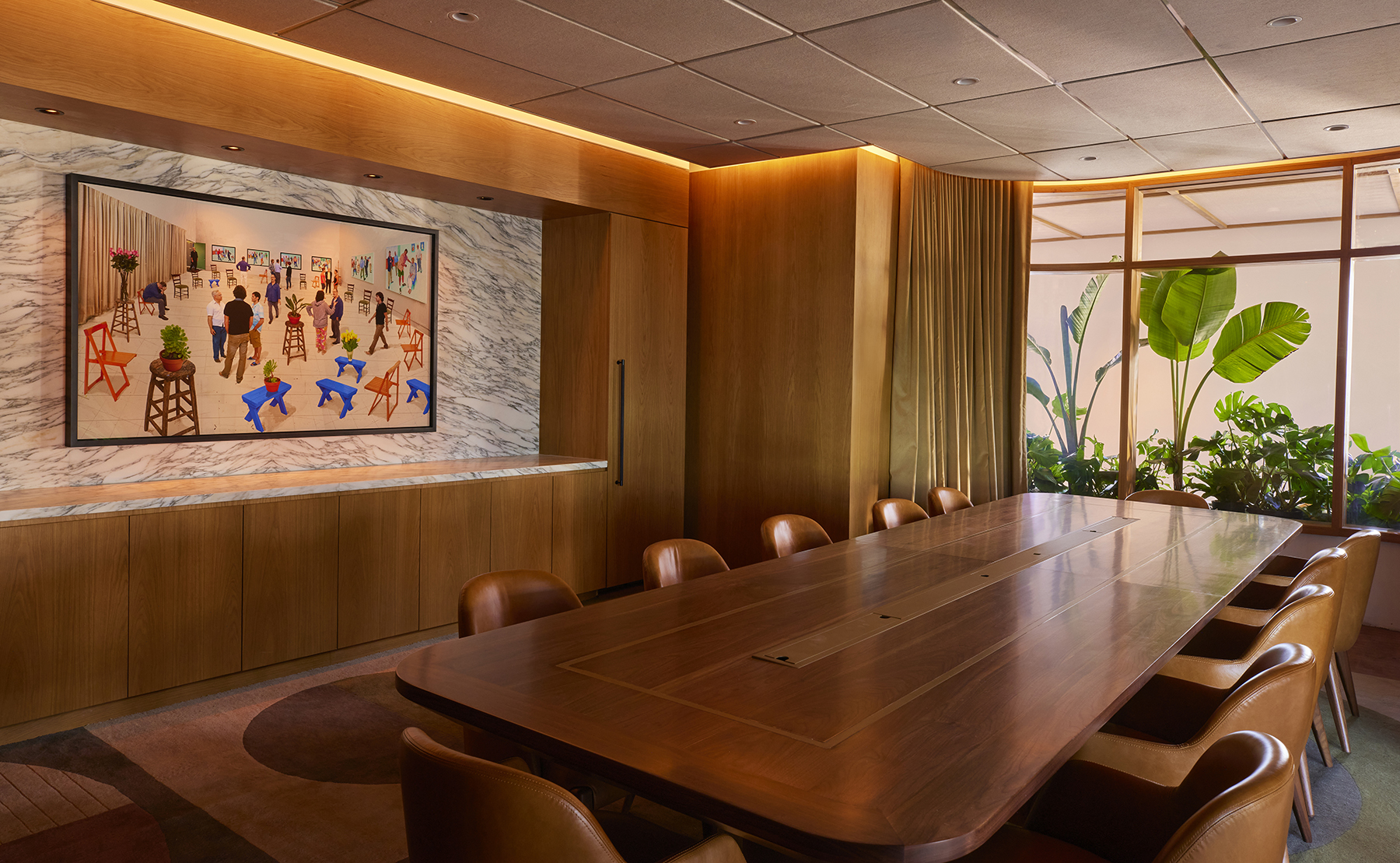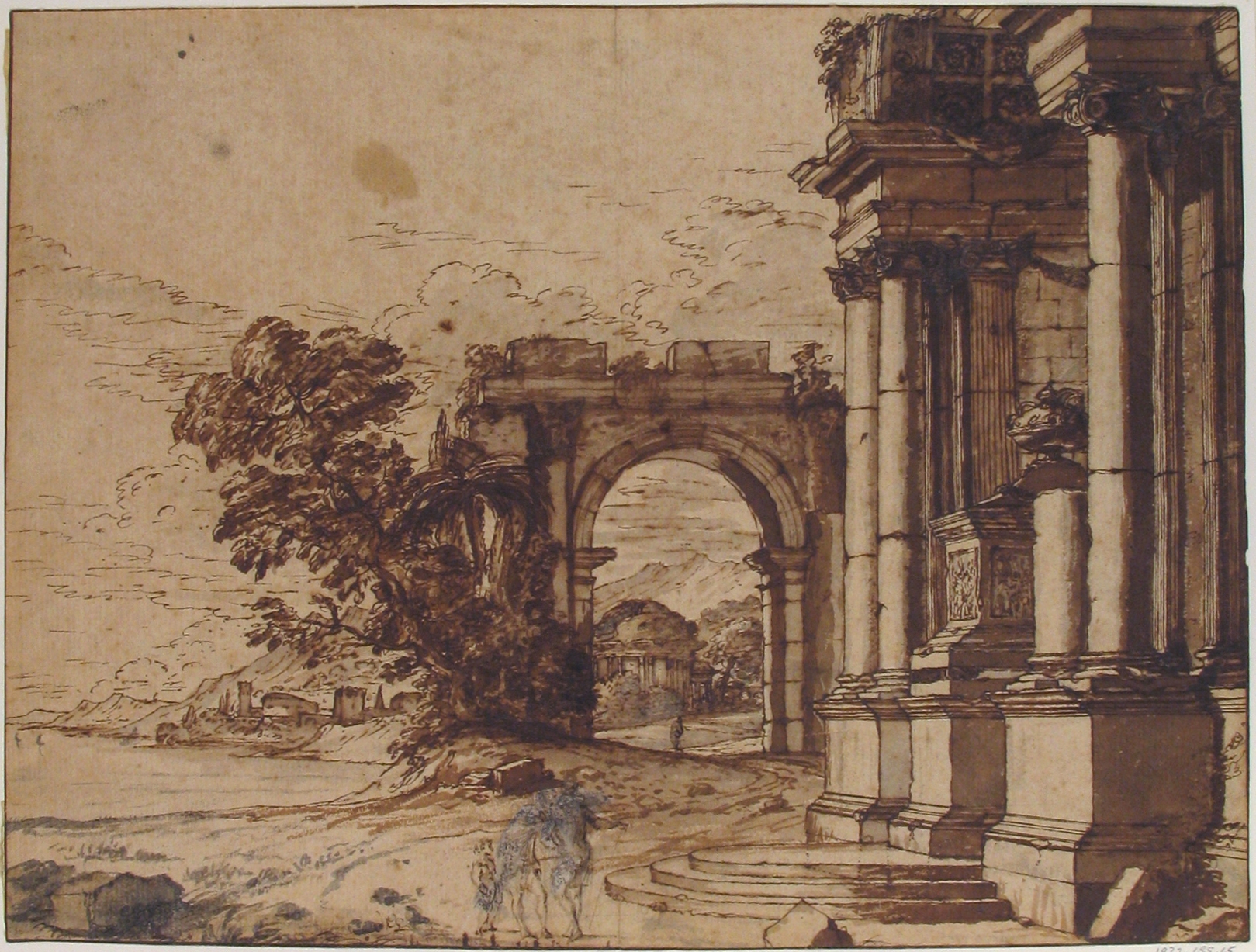Ema is a trained architect, writer and photographer who works as a Junior Architect at REX in NYC. Inspired by her global experiences, she shares captivating insights into the world’s most extraordinary cities and buildings and provides travel tips on her blog, The Travel Album.
In today’s fast-paced world, the traditional family home is evolving. More families are choosing multi-generational living arrangements, where grandparents, parents, children and siblings share a single residence. Multi-generational living has evolved from traditional, hierarchical structures with shared responsibilities and simple communal spaces to modern arrangements that prioritize flexibility, privacy and technological integration. Today, these homes feature separate living quarters, private entrances and adaptable spaces driven by economic factors, social needs and cultural values. This shift reflects changes in societal norms and architectural innovations, making contemporary multi-generational homes more comfortable and supportive of individual and collective family needs.
This trend, often driven by economic factors, caregiving needs and cultural values, offers numerous benefits, such as shared responsibilities, emotional support and closer family bonds. However, it also presents unique challenges, requiring thoughtful architectural design to balance privacy with togetherness. This article explores seven outstanding examples of multi-generational homes, showcasing innovative floor plans that accommodate different age groups while promoting family interaction.
Waverley Residence
By Shaun Lockyer Architects and Anderson Architecture, Sydney, Australia
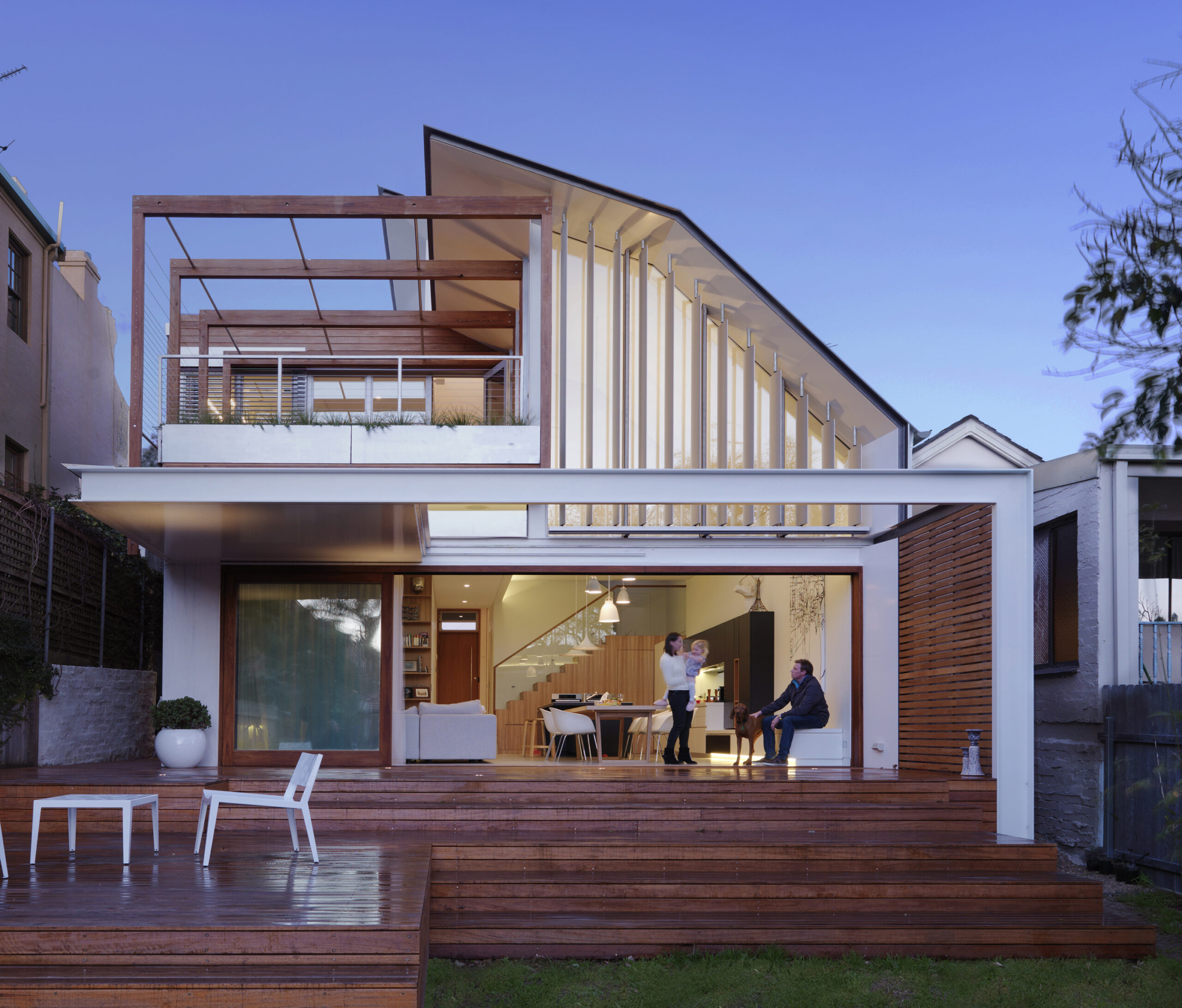
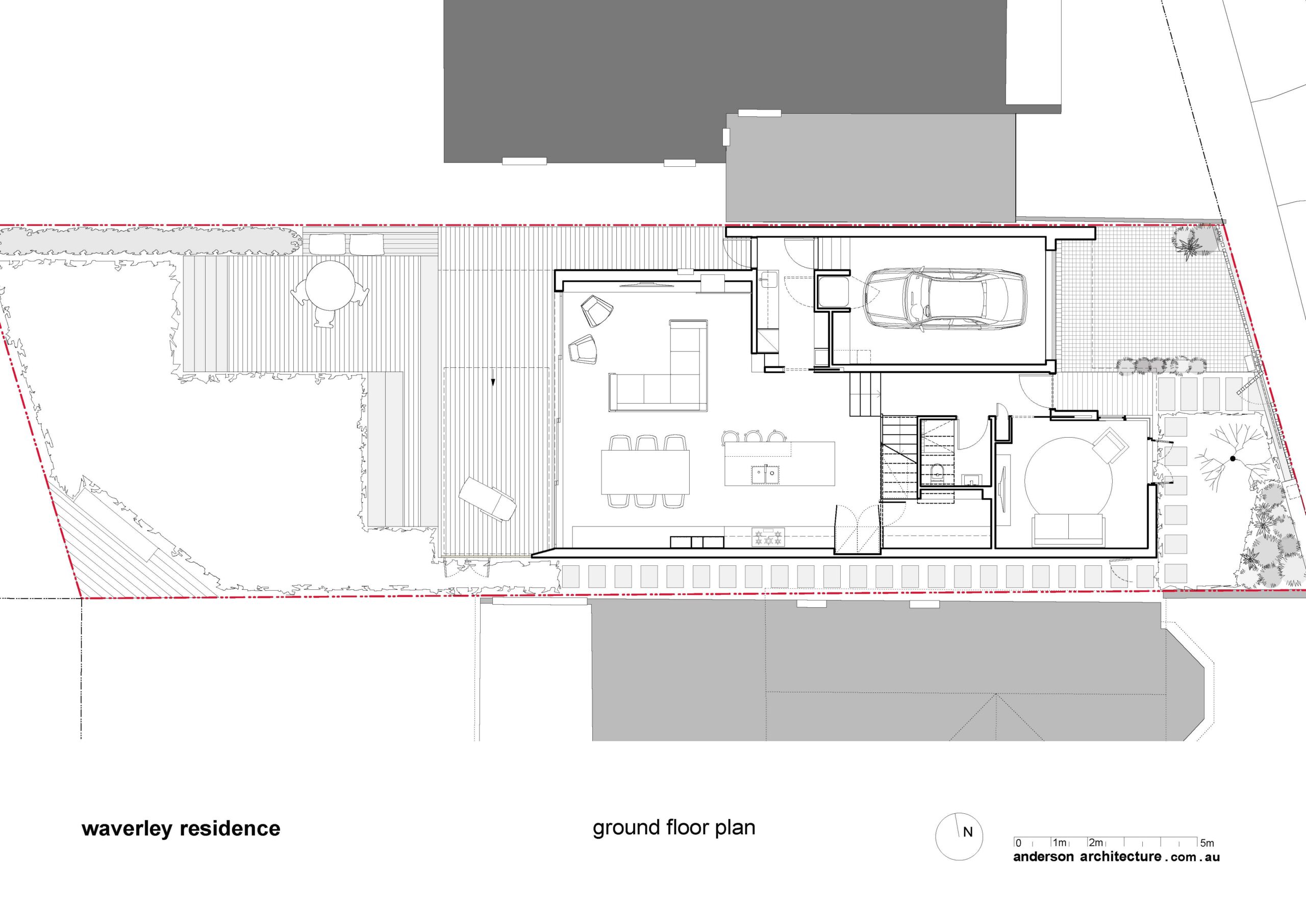
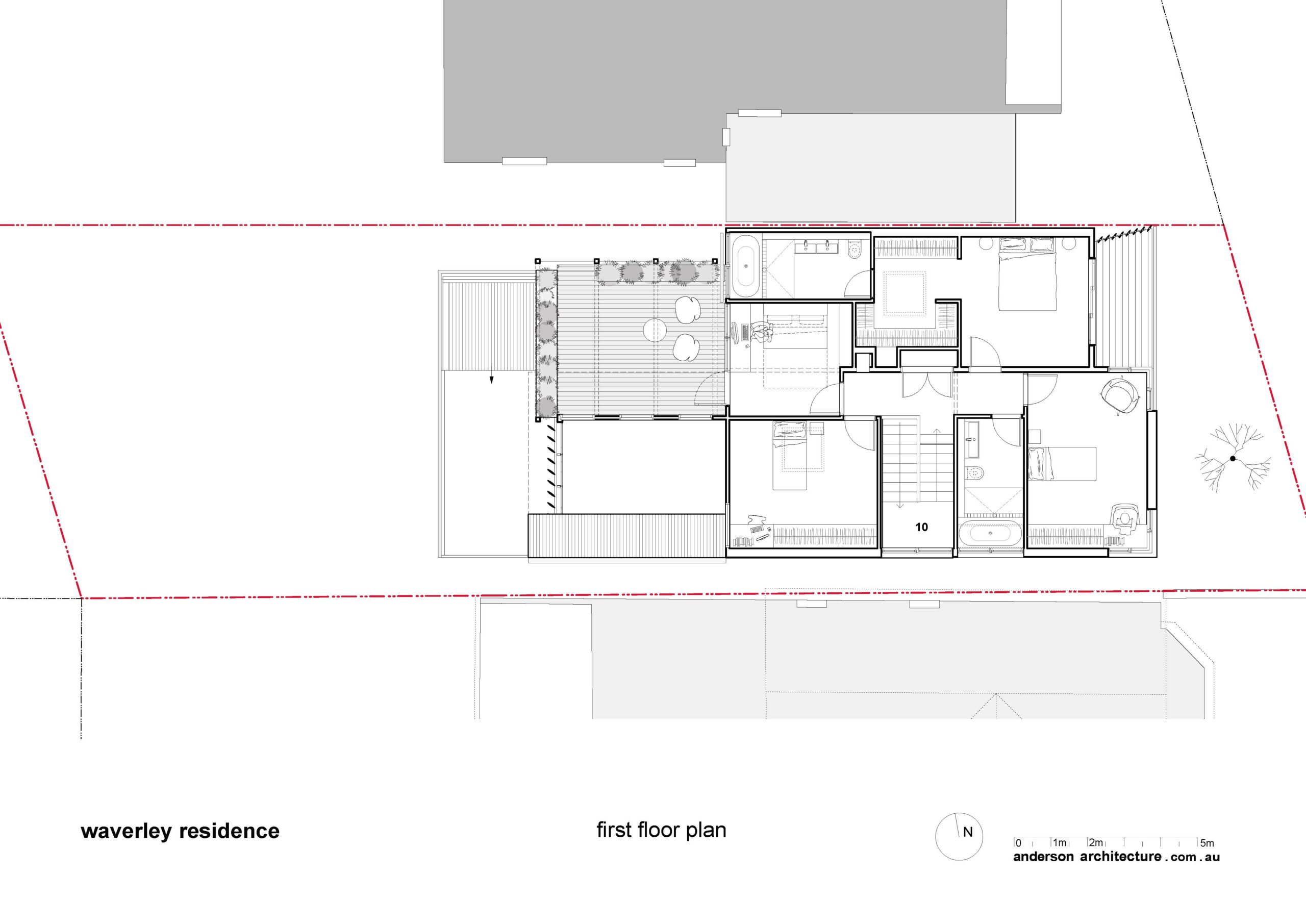
Waverley Residence, designed by Shaun Lockyer Architects and Anderson Architecture, exemplifies the integration of separate living spaces within a cohesive design. The floor plan features distinct areas, including an open living room and a private lounge, providing both privacy and unity for different family members. All bedrooms are located on the top floor, including two double bedrooms — one being a master suite with a large closet and the other opening to a large balcony that overlooks the backyard. This layout makes the home comfortable for multiple couples by providing personal space while ensuring that family members can come together and overlook shared areas, balancing privacy with communal living.
A vertical central skylight bathes the heart of the home in natural light, illuminating the communal spaces on the ground floor where family members can gather for meals, conversations and leisure activities. The design fills every space with natural light, from the large sliding back doors that open to the backyard to the floor-to-ceiling windows on the top floor, naturally encouraging movement throughout the home, encouraging interaction and fostering a sense of community. The open-plan living areas, including the kitchen, dining, and lounge spaces, promote easy movement and interaction among family members, and provides ample space for children to run around and play.
MeMo House
By BAM! arquitectura, San Isidro, Argentina
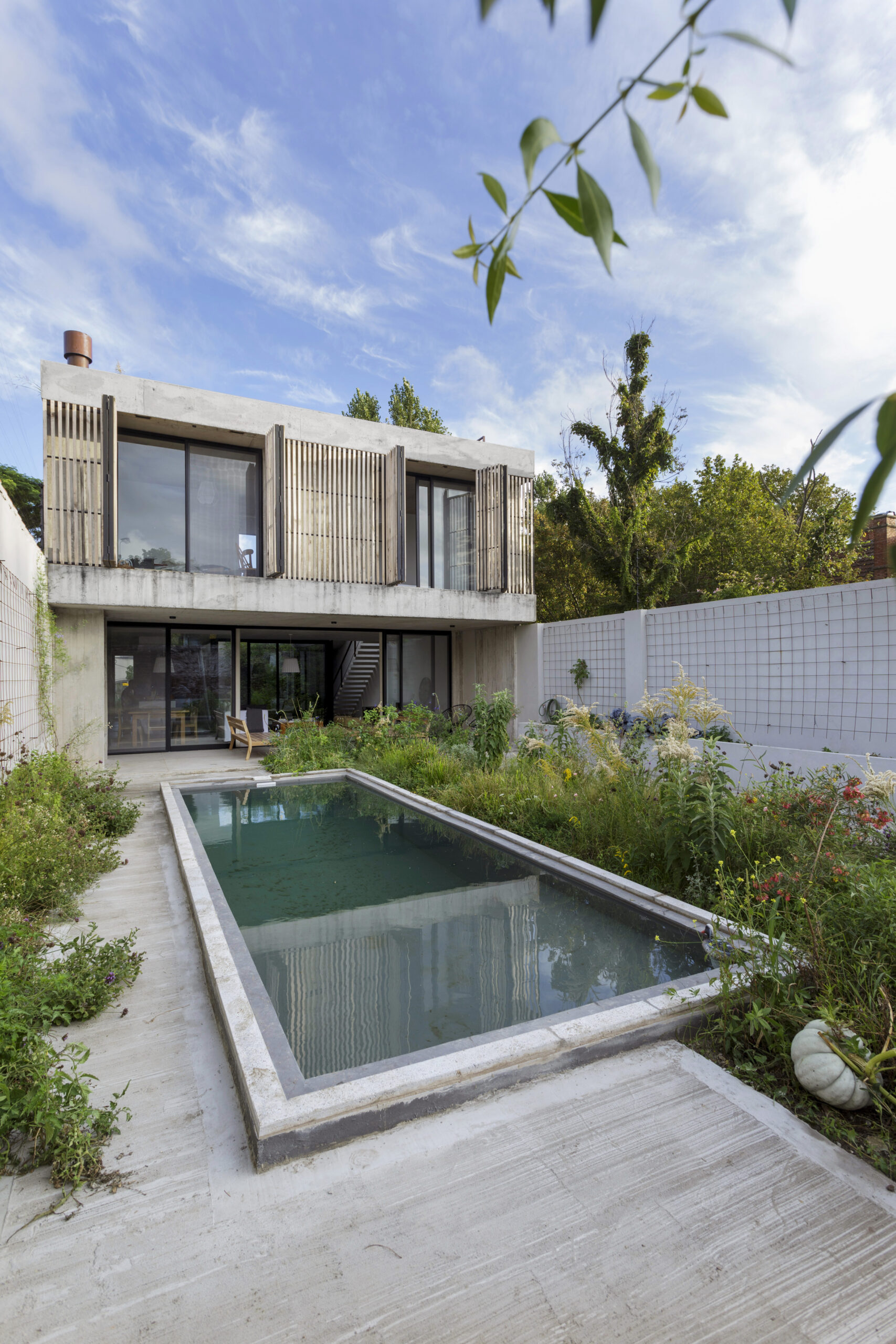
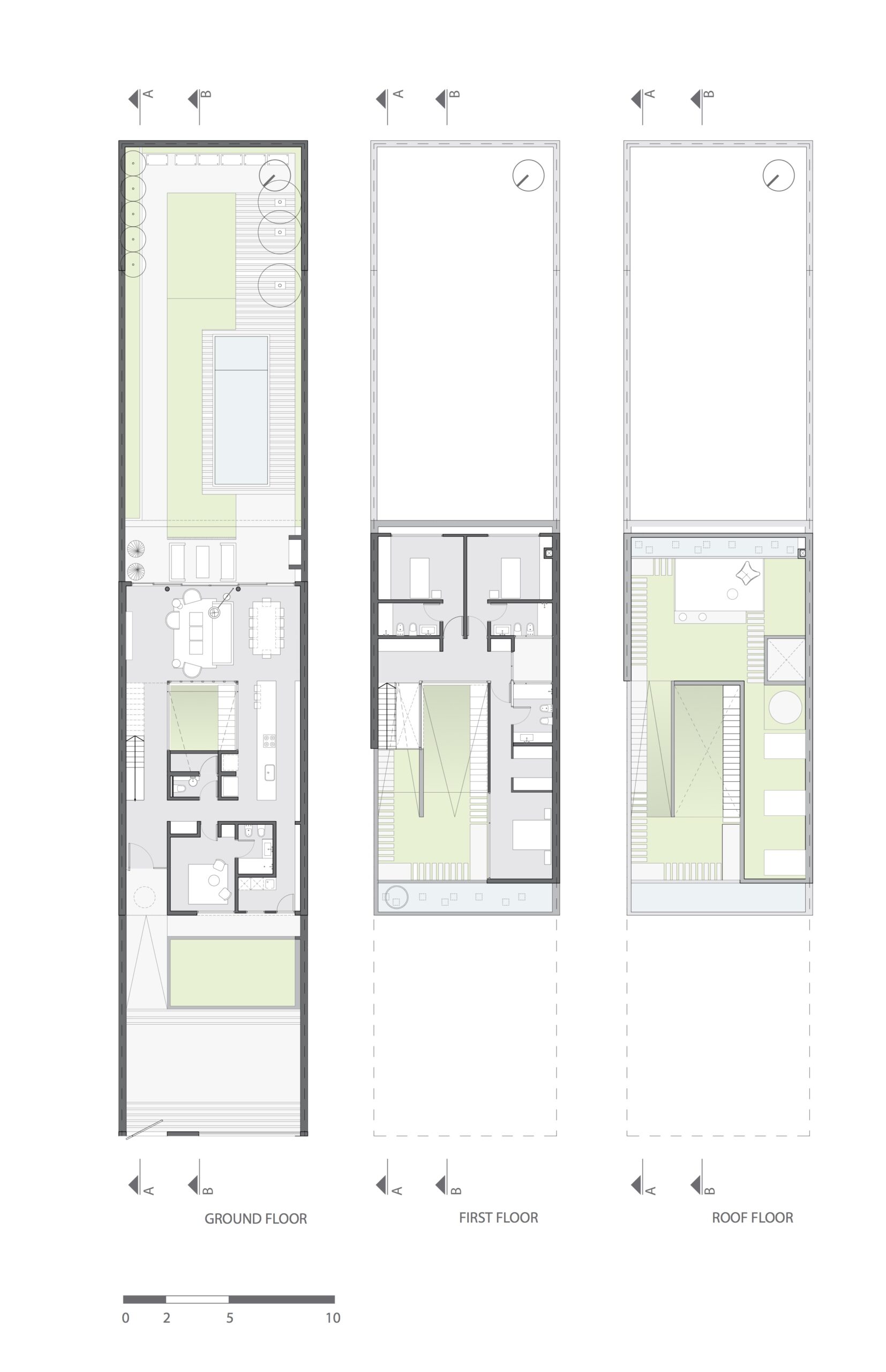
The MeMo House in Buenos Aires, designed by BAM! arquitectura, is a stellar example of a home that combines both architecture and landscaping into one. A garden interconnects all the floors of this house, conveying a powerful message to its inhabitants. With a focus on sustainability, the design not only caters to the needs of the current generation but also thoughtfully considers future generations, emphasizing a commitment to providing a better world for them.
This house is designed to offer separate living areas for different family units while fostering communal activities in shared spaces like the rooftop garden, central garden, backyard and pool area. Children can explore unique spaces and run up to the roof while their grandparents garden in the backyard.
The flexible floor plan features large glass walls and sliding doors that open the living room to the covered outdoor terrace, allowing the family to reconfigure the space as needed. This adaptability ensures that the home can evolve with the changing needs of its occupants. Open and flexible spaces like these, combined with a variety of unique areas to choose from based on mood and activity, are invaluable for facilitating interaction regardless of outdoor conditions. This design encourages family members of all ages to spend more time together and engage more frequently, fostering a strong sense of community within the home.
Larch House
By Architecturall, Surrey, United Kingdom

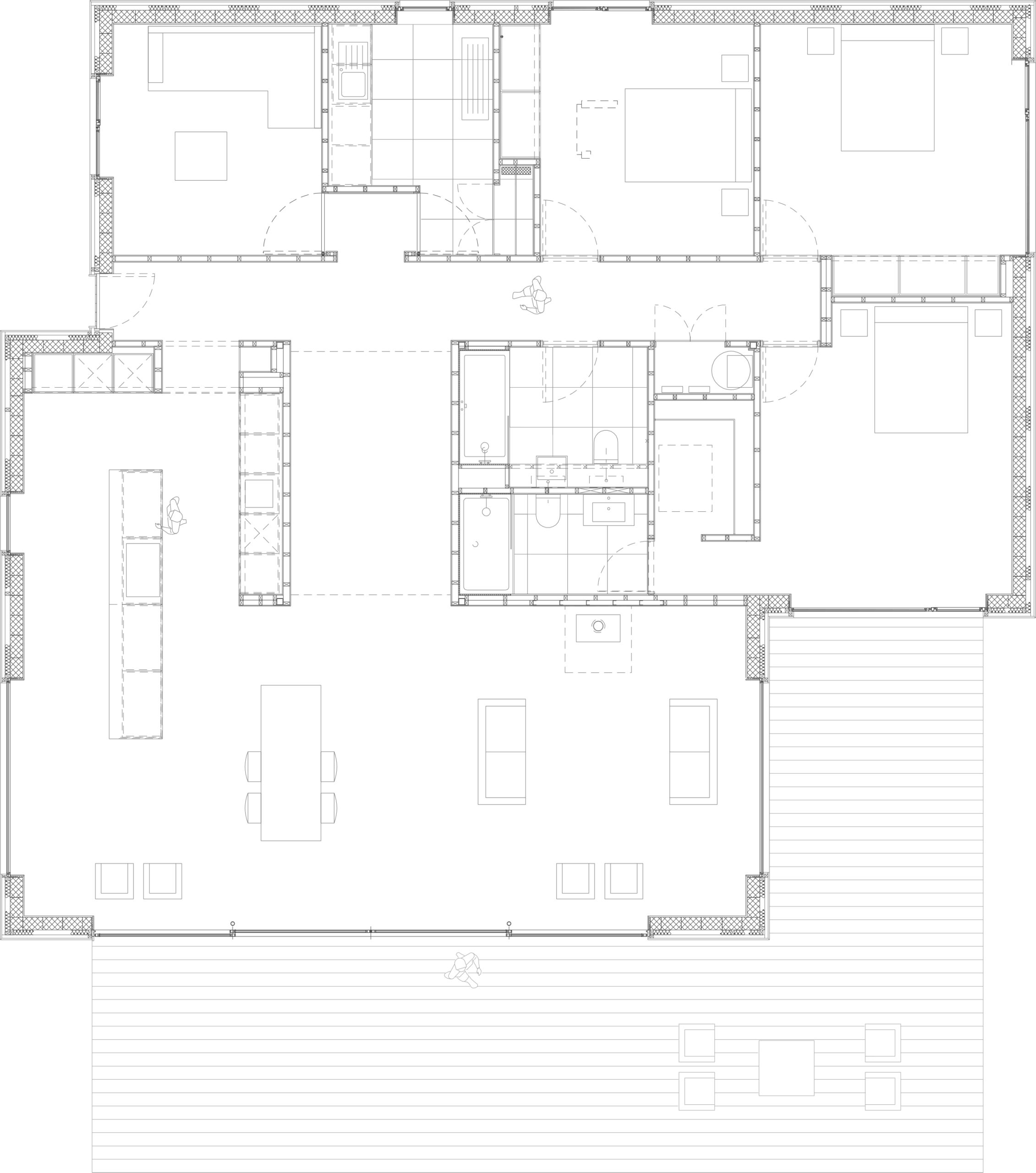
Larch House by Architecturall is a remarkable transformation of a dilapidated bungalow, which had stood for about 80 years, into a modern home nestled in the English woodlands. The project features several spacious, separate bedroom areas that can accommodate multiple adults, couples or generations, alongside expansive communal spaces designed to bring the family together. A large terrace wraps around the home, connecting the master bedroom to the living and kitchen areas, offering various routes for stepping out in the morning. This thoughtful design enhances flexibility and connectivity within the home, enabling residents to navigate different spaces according to their convenience at any given time.
The expansive communal kitchen and dining areas, occupying nearly half of the home’s footprint, offer a generous space for large families to cook and dine together. These areas are designed to accommodate large gatherings, making them perfect for family celebrations and daily meals. Floor-to-ceiling sliding doors, a common feature in many of these home designs, connect the indoor living spaces to an outdoor patio and garden. This design element creates a smooth transition to the outdoors, enhances the sense of space, and offers additional areas for relaxation and interaction. Nestled in a private, wooded area of England, the home is perfect for families, offering a peaceful environment for the elderly and a spacious backyard for children to safely run and play.
Findlay Residence
By Splyce Design, North Vancouver, Canada
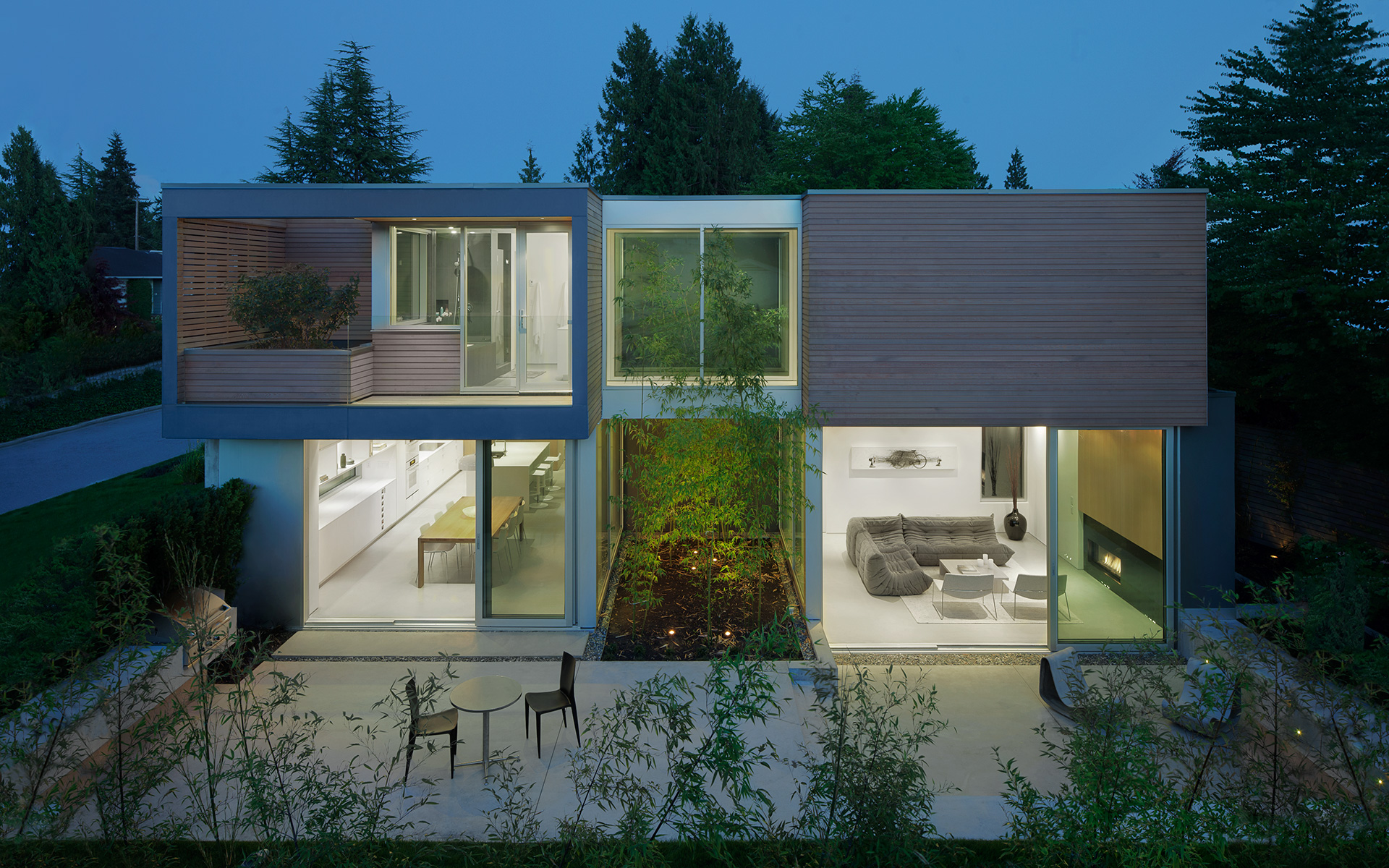
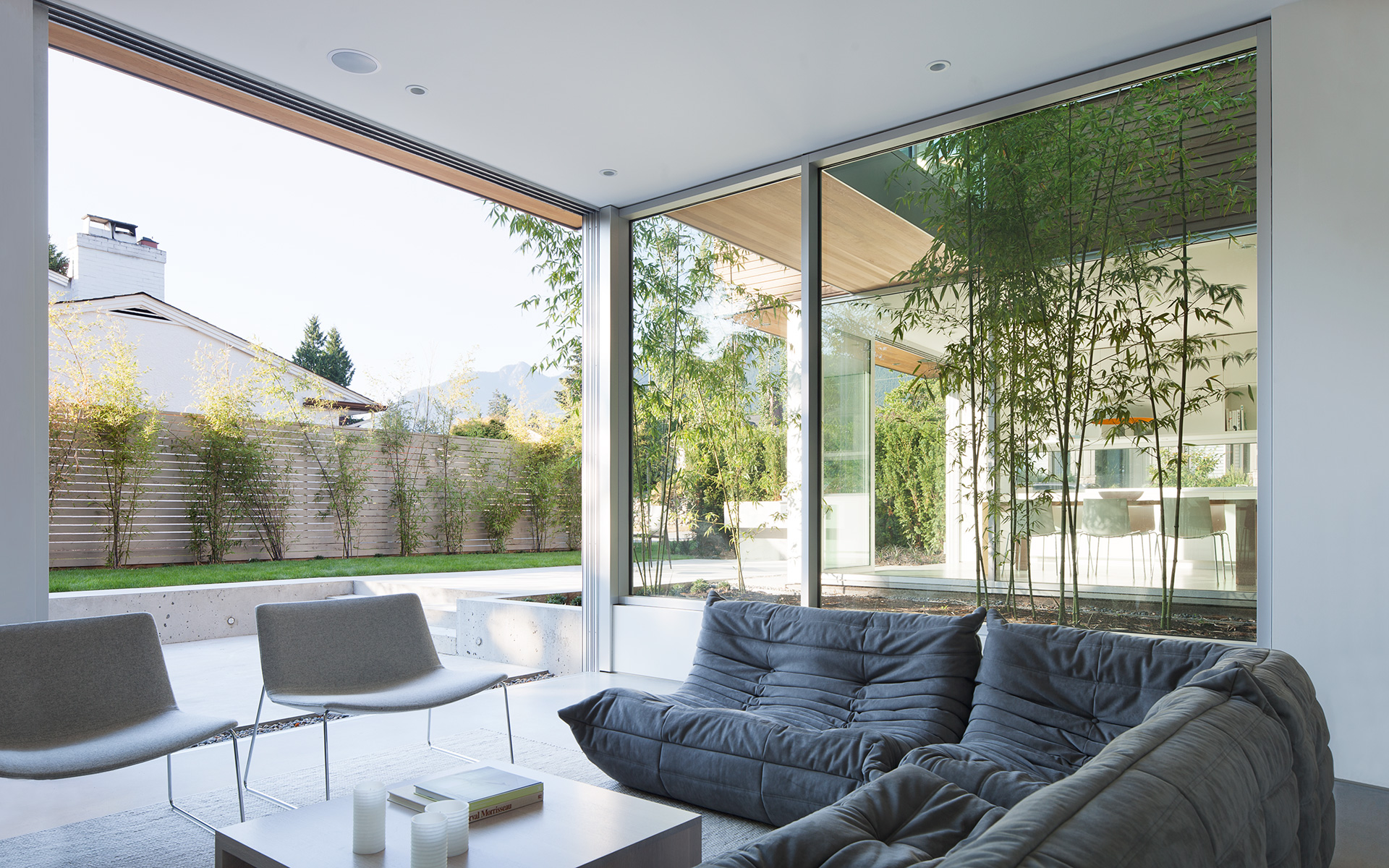 On the ground floor, the kitchen/dining area and living spaces are intentionally designed as separate entities to accommodate different schedules and movement patterns, ensuring flexibility and privacy for all occupants. Large sliding glass doors connect the kitchen and living spaces to the outdoors, creating a fluid indoor-outdoor transition. This design allows for distinct spaces while enabling easy movement between them, enhancing the overall flow and connectivity throughout the home. These outdoor areas, where family members can relax and enjoy each other’s company amidst nature, serve as extensions of the indoor living spaces, fostering a seamless indoor-outdoor lifestyle.
On the ground floor, the kitchen/dining area and living spaces are intentionally designed as separate entities to accommodate different schedules and movement patterns, ensuring flexibility and privacy for all occupants. Large sliding glass doors connect the kitchen and living spaces to the outdoors, creating a fluid indoor-outdoor transition. This design allows for distinct spaces while enabling easy movement between them, enhancing the overall flow and connectivity throughout the home. These outdoor areas, where family members can relax and enjoy each other’s company amidst nature, serve as extensions of the indoor living spaces, fostering a seamless indoor-outdoor lifestyle.
The House in Mishref
By STUDIO TOGGLE, Mishref, Kuwait
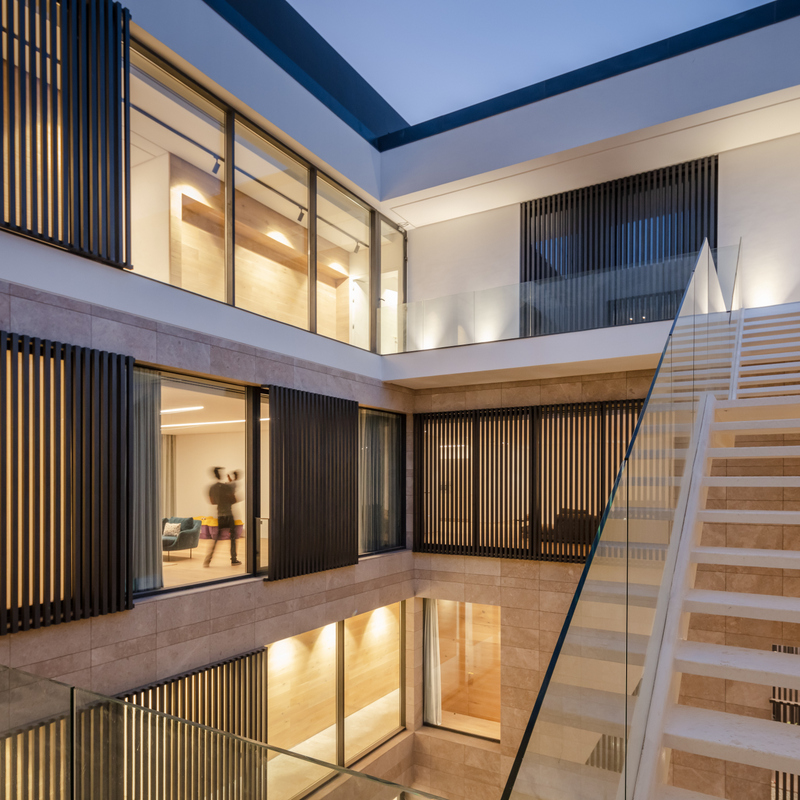
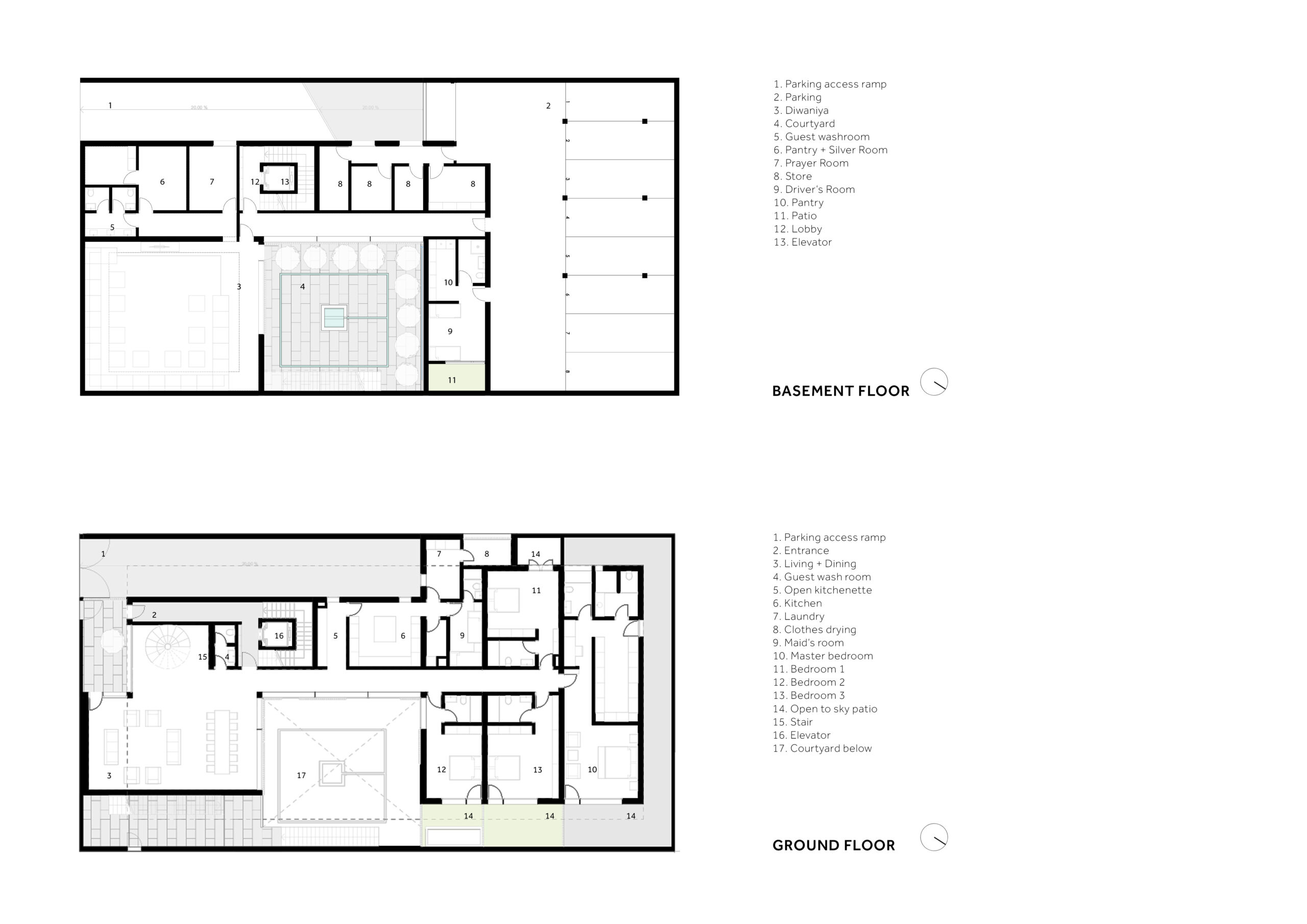
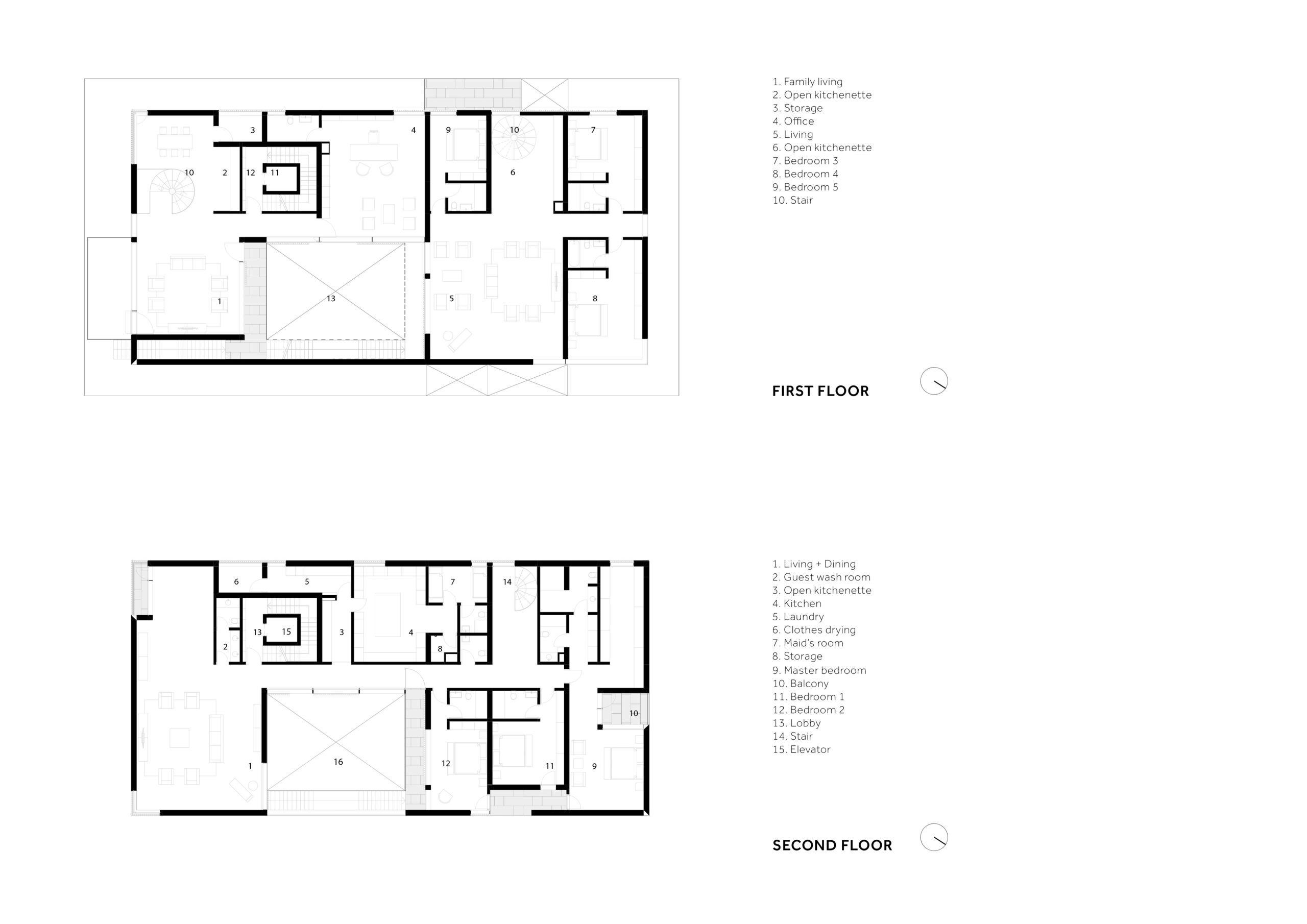
STUDIO TOGGLE‘s House in The House in Mishref exemplifies a multi-generational home designed to balance privacy and connectivity for an extended family. This residence, home to two brothers and their families, features multiple levels and distinct zones to cater to their varying lifestyles, outdoor space preferences and privacy needs. The design promotes both separation and togetherness (elements that are essential when living with or close to family members) centered around a courtyard that buffers rooms facing each other. Staircases connect balconies, creating an intentional circulation loop seen as “social spaces” where family members and neighbors can visually interact, fostering a sense of community, place and belonging within the home.
This layout ensures that each family or future generations have their own private space while maintaining a connection to the rest of the family. The central courtyard serves as an intentional meeting spot ideal for family activities and socializing. Each family unit has its own private bedrooms and bathrooms, offering the experience of having your own home while still being under the same roof as other family members.
Courtyard House
By Formwerkz Architects, Singapore
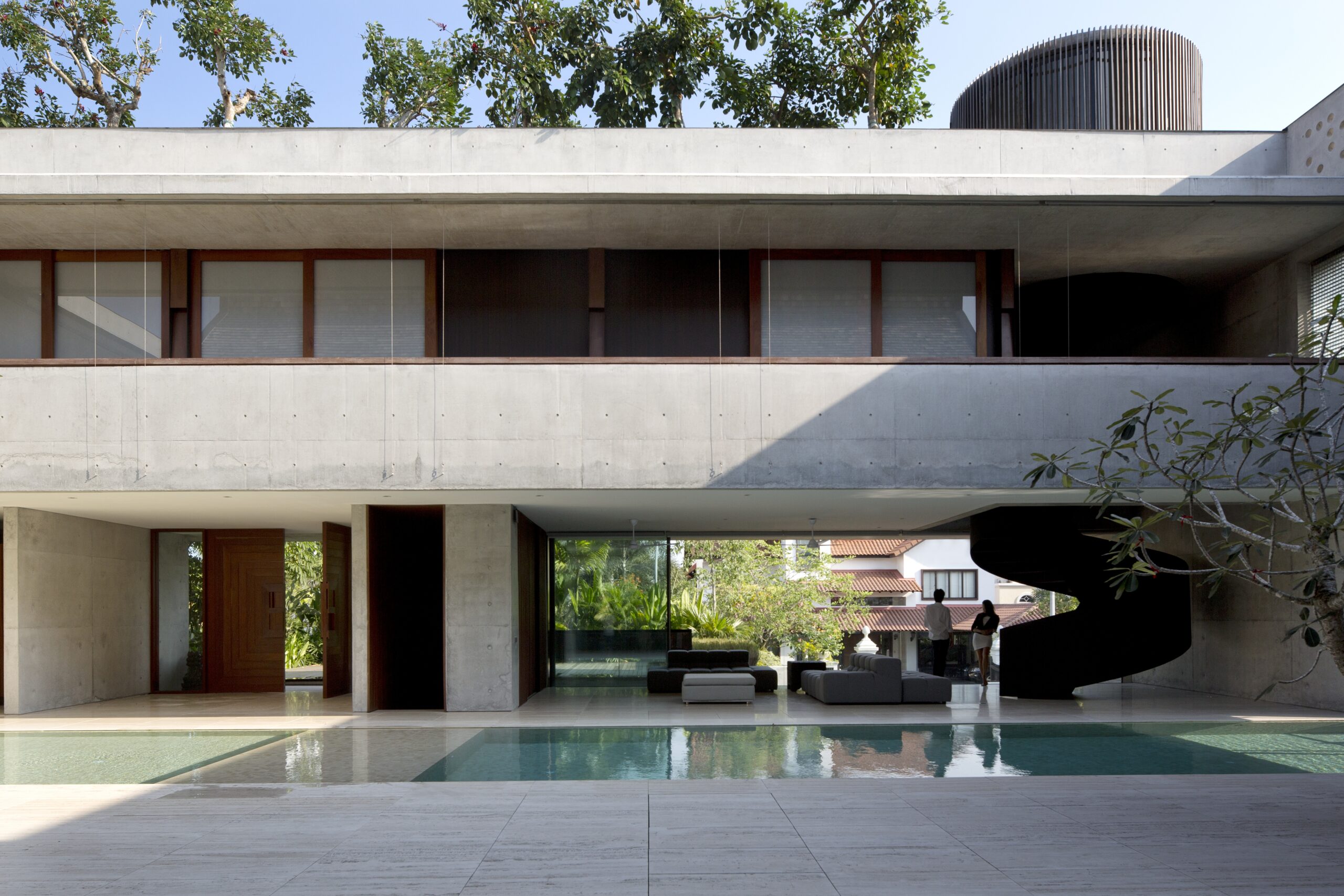
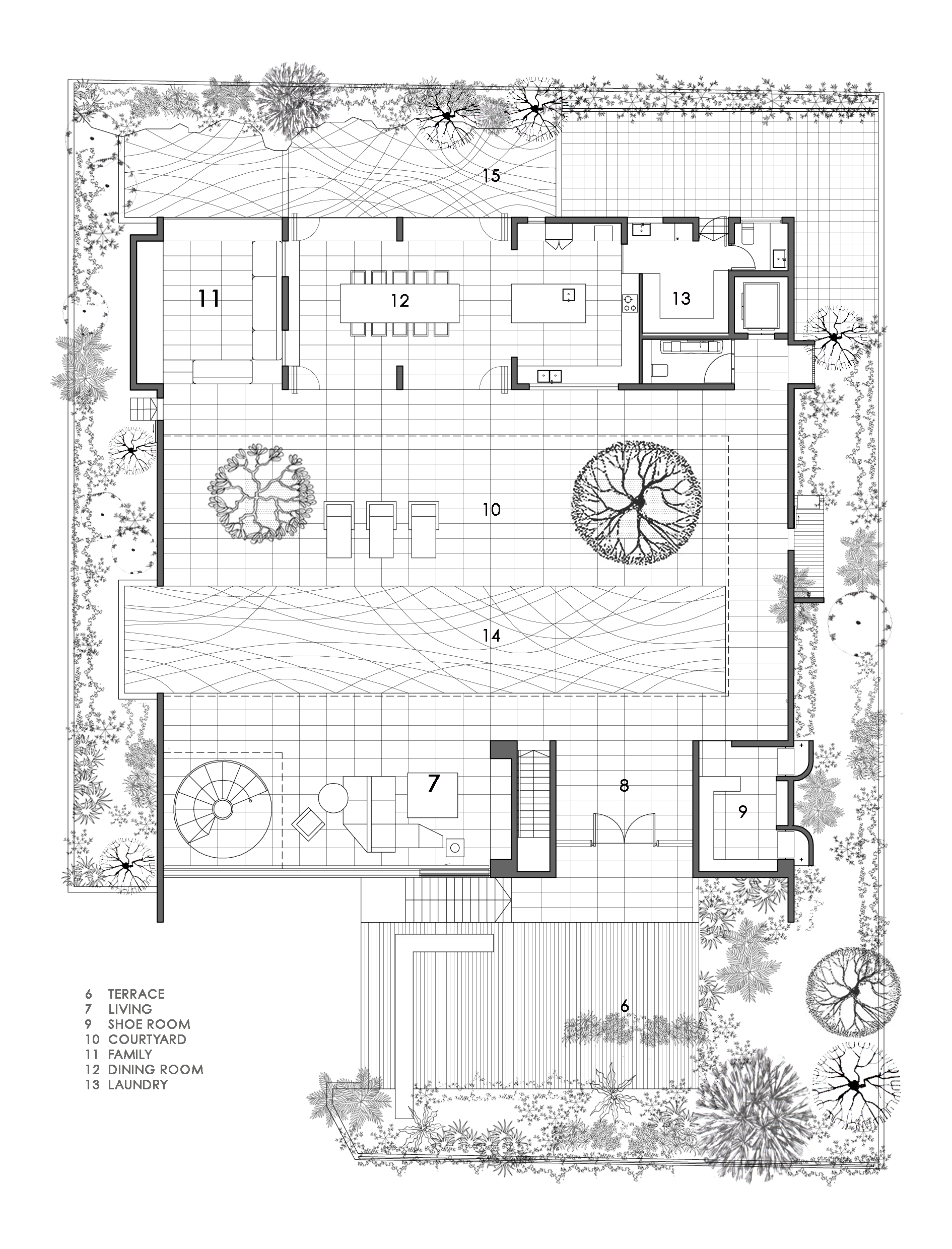
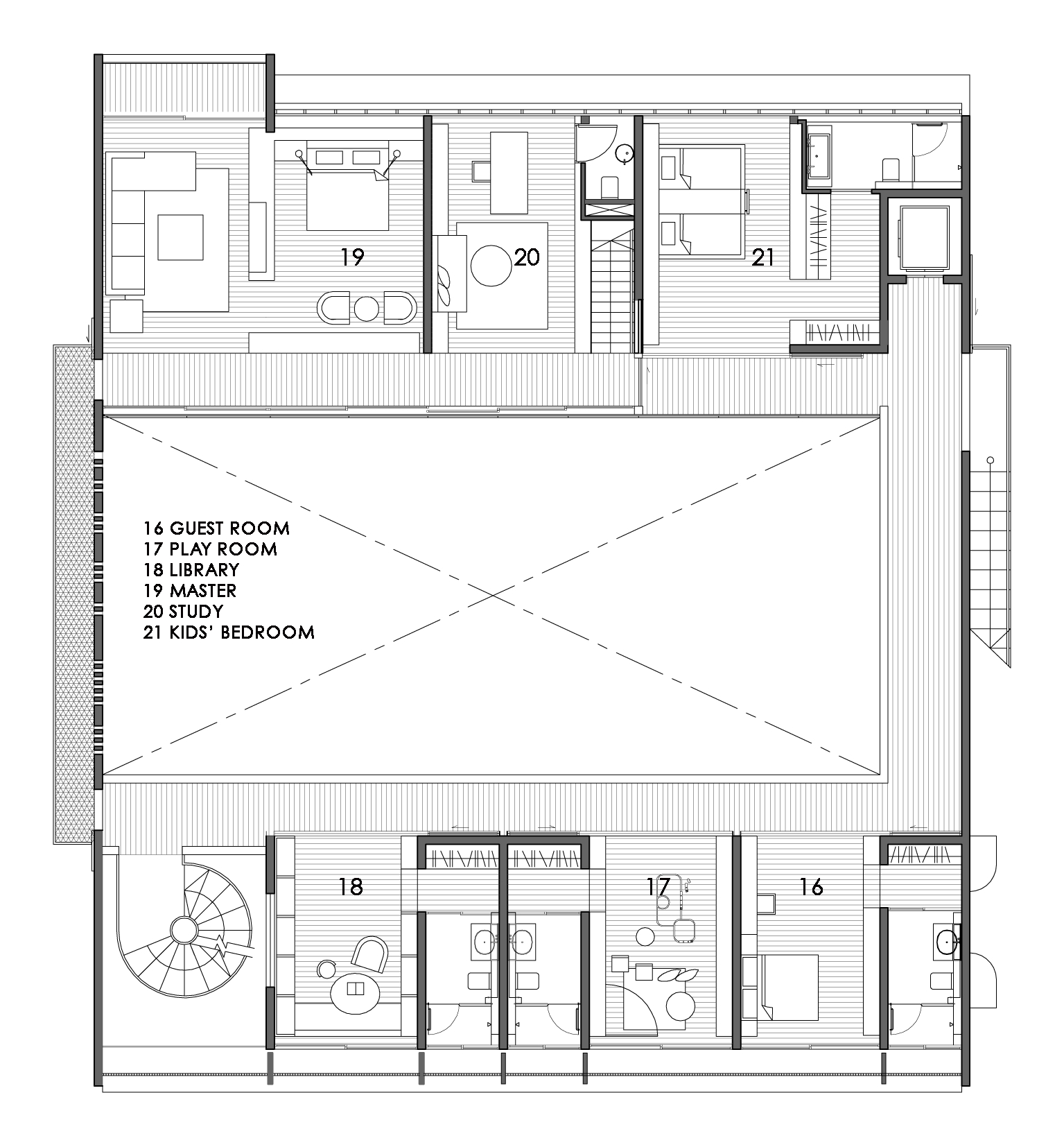
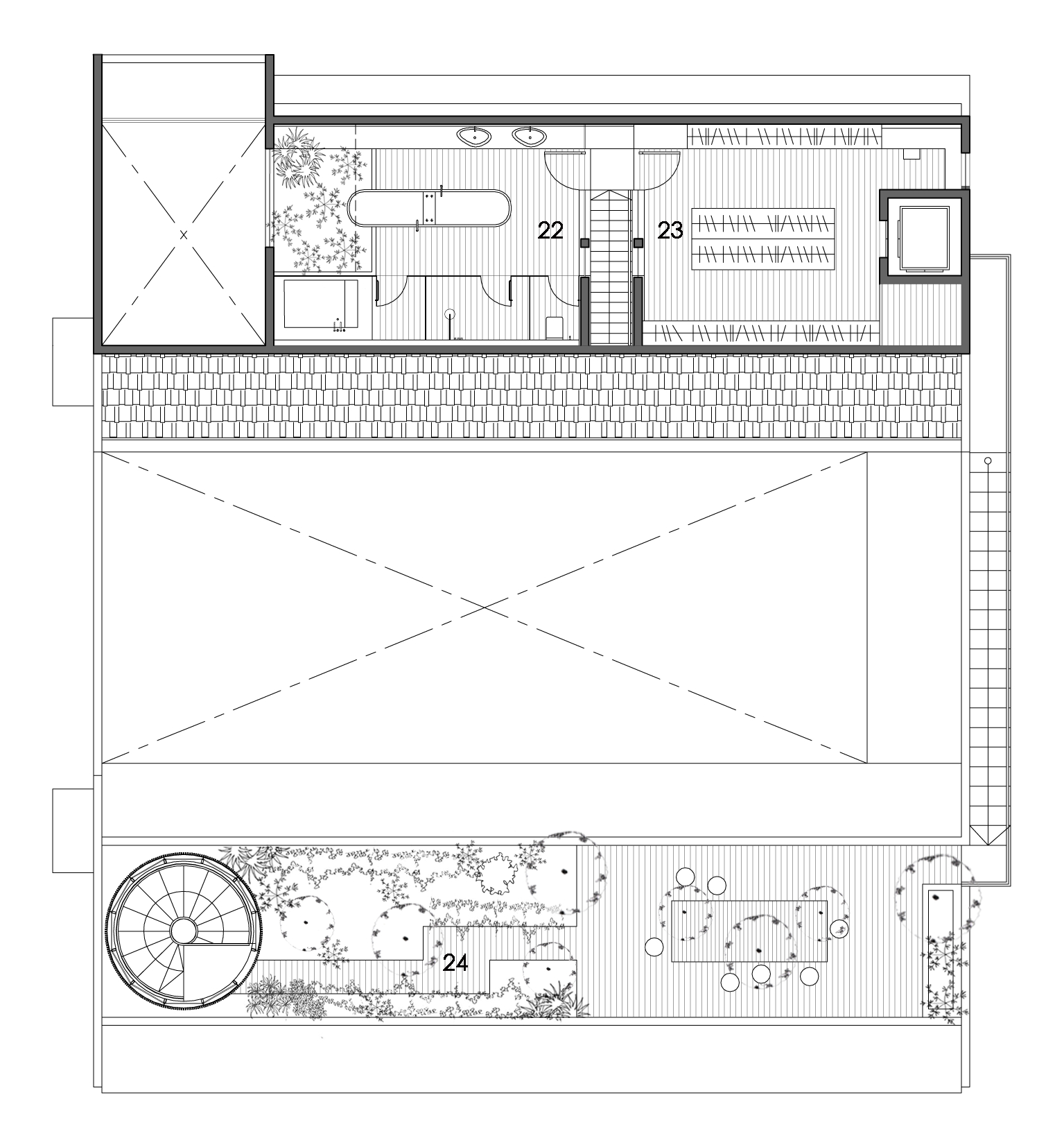
The Courtyard House in Singapore, designed by Formwerkz Architects, is a multi-generational home tailored for those who value communal spaces but also seek privacy. The home is divided into a front, central and back garden, with all bedrooms overlooking the central garden. Private spaces, such as bedrooms, are situated away from the street, creating a gradient of privacy that increases as you move deeper into the building. The main living spaces are organized around a central courtyard — the heart of the home — encouraging gatherings in the central atrium and pool area. The ground floor features a seamless open space with minimal obstructions, allowing for free-flowing movement and accommodating large gatherings with various pathways and patterns.
Surrounded by dense tropical foliage, the home features a serene courtyard perfect for various leisure activities. This design ensures that each generation has its own space while maintaining family connections. It skillfully combines large windows and open areas with perforated walls and screens to balance openness and privacy.
The House of Remembrance
By Neri & Hu, Singapore
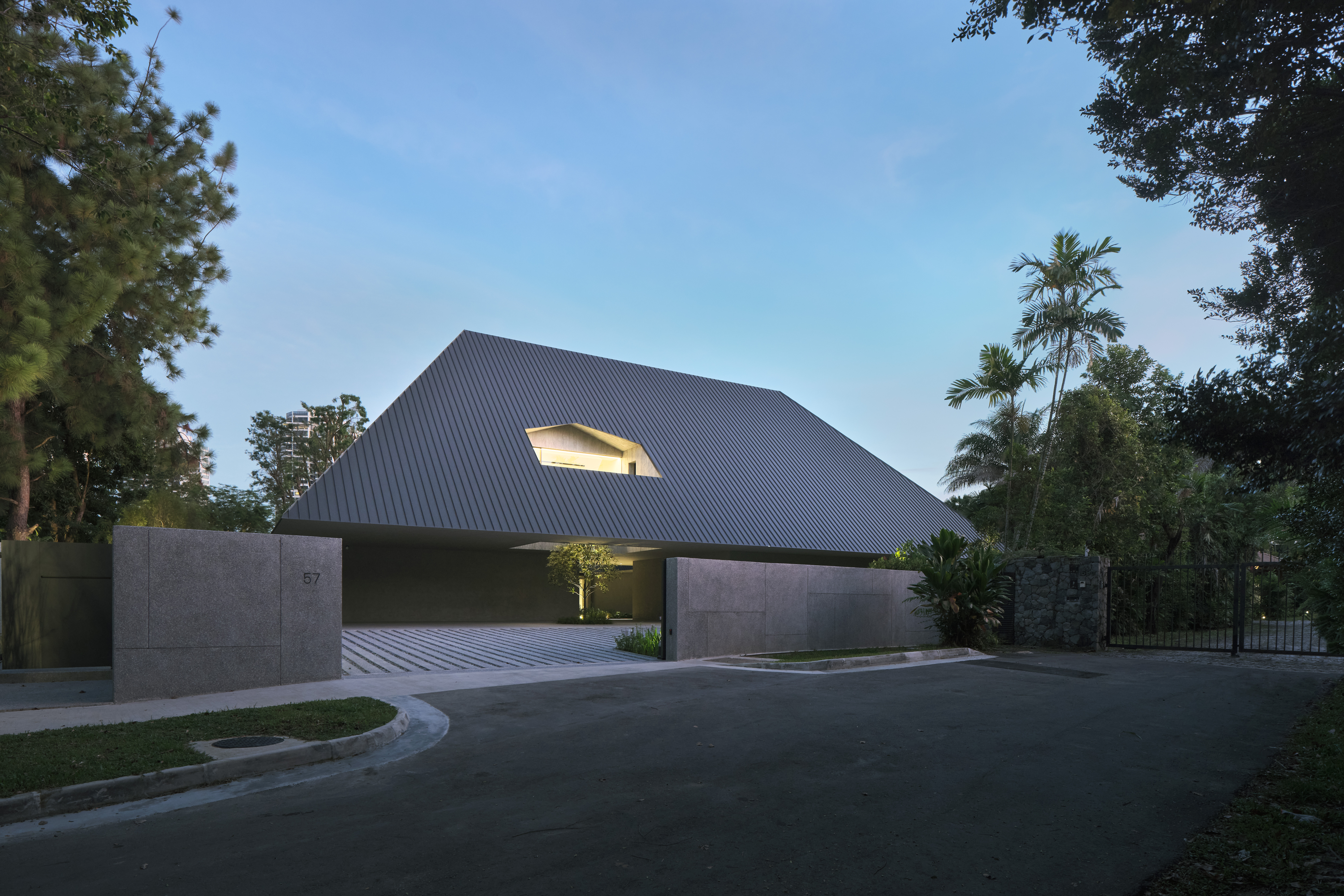
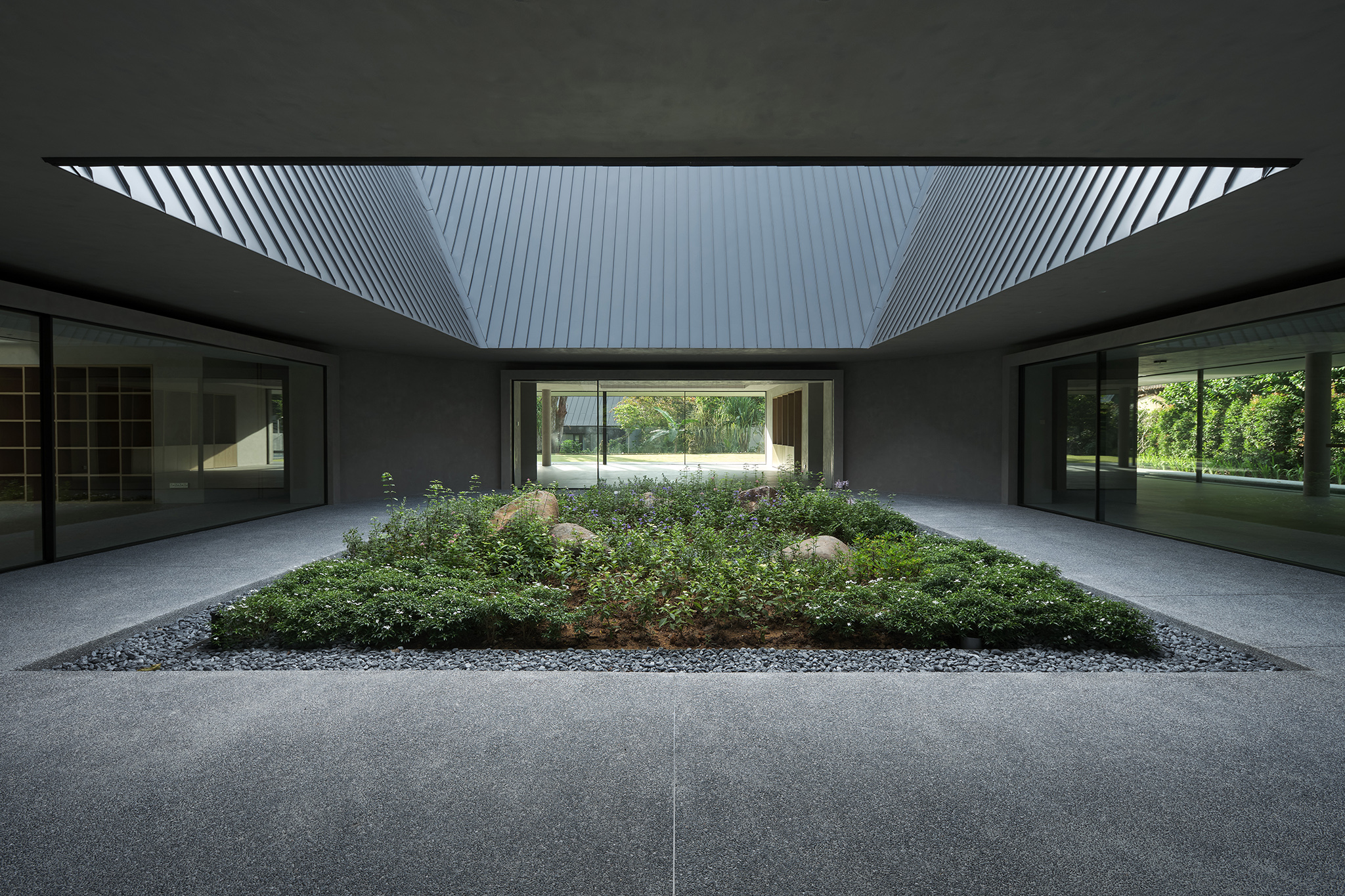
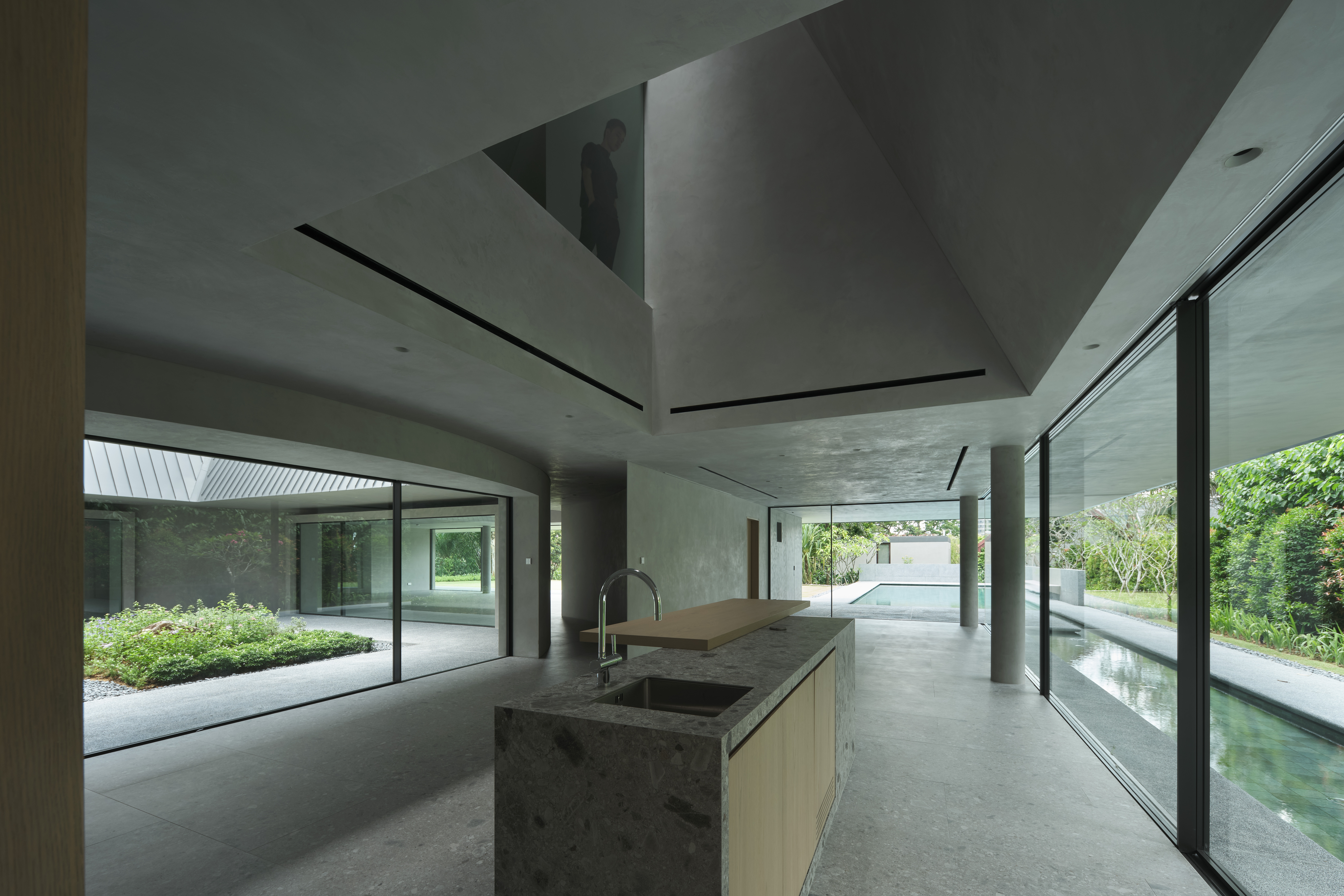 The House of Remembrance by Neri & Hu is an ideal multi-generational home, perfectly blending privacy, communal living and collective memory. Designed to accommodate three adult siblings and their families, the home features private bedrooms within the pitched roof’s steep gables, offering secluded spaces while maintaining the house’s single-story bungalow appearance.
The House of Remembrance by Neri & Hu is an ideal multi-generational home, perfectly blending privacy, communal living and collective memory. Designed to accommodate three adult siblings and their families, the home features private bedrooms within the pitched roof’s steep gables, offering secluded spaces while maintaining the house’s single-story bungalow appearance.
The central courtyard, serving as a memorial garden, connects all communal spaces such as the living room, kitchen, dining room and study, fostering family interaction. Expansive glass walls and large sliding doors ensure visual transparency and connection to the lush surrounding gardens, while the circular ground floor circulation reinforces a sense of unity and sacredness. This thoughtful design balances the need for privacy with the desire for communal spaces, making it perfect for multi-generational living.
Last chance: The 14th Architizer A+Awards celebrates architecture's new era of craft. Apply for publication online and in print by submitting your projects before the Final Entry Deadline on January 30th!
 Courtyard House
Courtyard House  Findlay Residence
Findlay Residence  Larch house
Larch house  MeMo House
MeMo House  Single Family Residence in Mishref, Kuwait
Single Family Residence in Mishref, Kuwait  Waverley House
Waverley House 